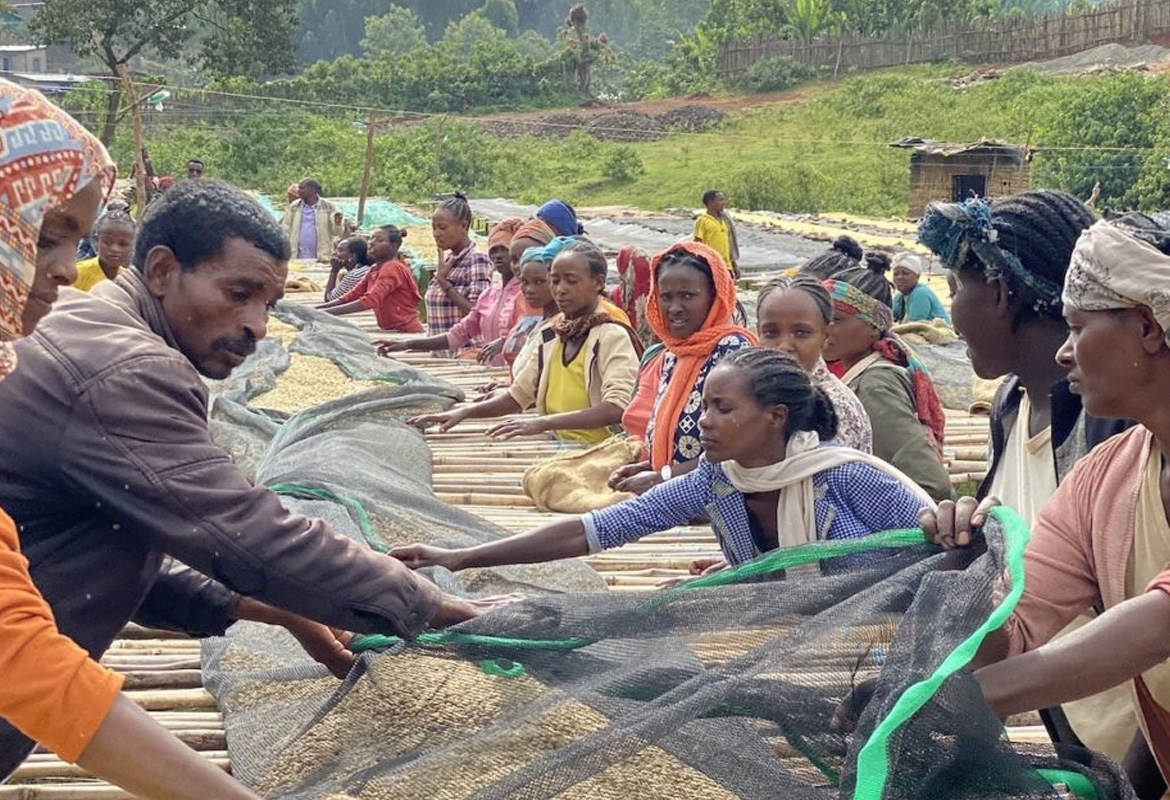Ethiopian Coffee
The story of coffee has its beginnings in Ethiopia, the original home of the coffee plant, Coffee Arabica, which still grows wild in the forest of the highlands. While nobody is sure exactly how coffee was originally discovered as a beverage, it is believed that its cultivation and use began as early as the 9th century. Some authorities claim that it was cultivated in the Yemen earlier, around AD 575. The only thing that seems certain is that it originated in Ethiopia, from where it traveled to the Yemen about 600 years ago, and from Arabia it began its journey around the world.
Among the many legends that have developed concerning the origin of coffee, one of the most popular account is that of Kaldi, an Abyssinian goatherd, who lived around AD 850. One day he observed his goats behaving in abnormally exuberant manner, skipping, rearing on their hind legs and bleating loudly. He noticed they were eating the bright red berries that grew on the green bushes nearby. Kaldi tried a few himself, ad soon felt a novel sense of elation. He filled his pockets with the berries and ran home to announce his discovery to his wife and she told him to give the berries to the monks, whose through them into the fire. After they smelt the aroma, they picked the berris out again and covered with hot water to preserve their goodness. That night the monks sat up drinking the rich and fragrant brew, and from that day vowed they would drink it daily to keep them awake during their long, nocturnal devotions. While the legends attempt to condense the discovery of coffee and its development as a beverage into one story, it is believed that the monks of Ethiopia, may have chewed on the berries as a stimulant for centuries before it was brewed as a hot drink.
Another account suggests that coffee was brought to Arabia from Ethiopia, by Sudanese slaves who chewed the berries en route to help them survive the journey. There is some evidence that coffee was ground and mixed with butter, and consumed like chocolate for sustenance, a method reportedly used by the Galla tribe of Ethiopia, which lends some credence to the story of the Sudanese slaves. The practice of mixing ground coffee beans with ghee (clarified butter) persists to this day in some parts of Kaffa and Sidamo, two of the principle coffee producing regions of Ethiopia, and in Kaffa, from which its name derives, the drink is brewed today with the addition of melted ghee which gives it a distinctive, buttery flavour. Today, Coffee holds a sacred place in Ethiopia. Already the growing and picking process of coffee involves over 12 million Ethiopians and produces over two-thirds of the country's earnings. The best Ethiopian coffee may be compared with the finest coffee in the world, and premium washed Arabica beans fetch some of the highest prices on the world market.
Ethiopia's coffee ceremony is an integral part of their social and cultural life. An invitation to attend a coffee ceremony is considered a mark of friendship or respect and is an excellent example of Ethiopian hospitality. The ceremony is usually conducted by one young woman, dressed in the traditional Ethiopian costume of a white dress with colored woven borders. The long involved process starts with the ceremonial apparatus being arranged upon a bed of long scented grasses. The roasting of the coffee beans is done in a flat pan over a tiny charcoal stove, the pungent smell mingling with the heady scent of incense that is always burned during the ceremony. The lady who is conducting the ceremony gently washes a handful of coffee beans on the heated pan, then stirs and shakes the husks away. When the coffee beans have turned black and shining and the aromatic oil is coaxed out of them, they are ground by a pestle and a long handled mortar. The ground coffee is slowly stirred into the black clay coffee pot locally known as 'jebena', which is round at the bottom with a straw lid. Due to the archaic method used by Ethiopians, the ground result can be called anything but even, so the coffee is strained through a fine sieve several times. The lady finally serves the coffee in tiny china cups to her family, friends and neighbors who have waited and watched the procedure for the past half-hour. Often it is complemented by a traditional snack food, such as popcorn, peanuts or cooked barley. In most parts of Ethiopia, the coffee ceremony takes place three times a day - in the morning, at noon and in the evening. It is the main social event within the village and a time to discuss the community, politics, life and about who did what with whom. In a world where time has long become a commodity, the Ethiopian coffee ceremony takes us back to a time when value was given to conversation and human relations.
Article taken from here




